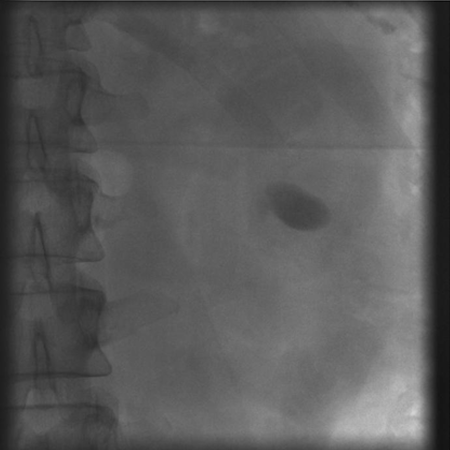Minimal invasive percutaneous nephrolitholapaxy
(so-called Mini-PCNL)
The minimal invasive percutaneous nephrolitholapaxy, abbreviated Mini-PCNL, is an endoscopic procedure to remove kidney stones. It is used for larger kidney stones (>1.5cm) or if other therapy methods, e.g. shock wave treatment (ESWT) or flexible ureterorenoscopy, have not been or do not seem successful due to anatomic particularities of the pelvicalyceal system.
A special miniaturised instrument is used for Mini-PCNL. The surgery takes place under general anaesthesia. After contrast medium imaging of the kidney tract on the effected side, the kidney is punctured directly through the skin in the area of the flank. The puncture is controlled via fluoroscopy and ultrasound. After carefully dilating (using a bougie) of the puncture canal, the endoscope is inserted into the kidney. Using a special laser, the kidney stones are then broken up and washed out while a direct view of the operation is provided. At the end of surgery, a catheter (hose), a so-called renal fistula, is placed in the kidney to secure the outward urine flow. This catheter can generally be removed without any pain a few days after surgery.
Mini-PCNL constitutes an effective and very safe method to treat kidney stones. Depending on the size of the stone, repeated surgery is only very rarely required. Generally, the patient is immediately “stone-free”. The use of small instruments makes Mini-PCNL a low-risk procedure. Severe complications like heavy bleeding are extremely rare and treatable.
The surgery takes place during a hospital stay of normally 4-5 days.

Röntgenologische Dokumentation eines Mini-PCNL-Eingriffs.
(Bilder © Prof. Dr. Lahme, Siloah St. Trudpert Klinikum Pforzheim)


